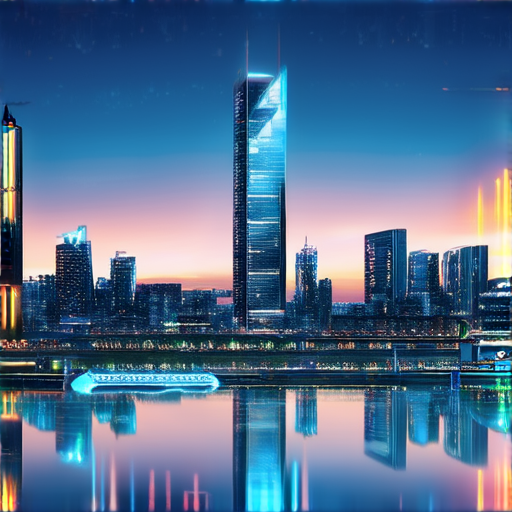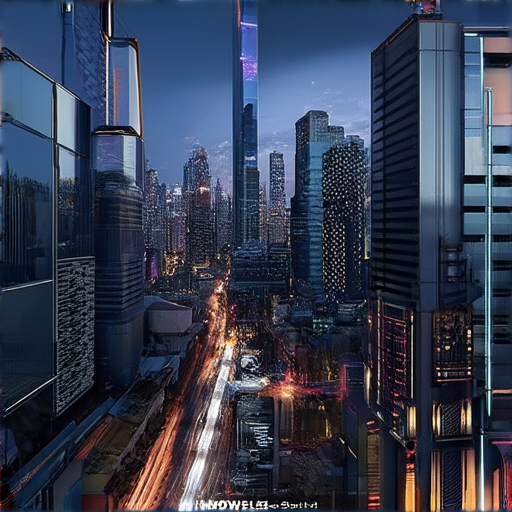As we step into the year 2024, it’s essential to stay ahead of the curve when it comes to web design trends. With the ever-evolving digital landscape, businesses need to adapt quickly to remain competitive and engage their target audience effectively. In this article, we’ll delve into the latest web design trends, exploring what’s hot, what’s not, and how these emerging trends can help boost your SEO and user engagement.

The New Trend in Web Design
In recent years, web design has undergone significant changes, shifting away from excessive animation and 3D elements towards a more intentional and refined approach.
- Purposeful Animations: Designers are now focusing on using animations that enhance the user experience, rather than overwhelming it.
- Strategic 3D Elements: While 3D elements are still used, they are now employed thoughtfully to create visual interest and depth.
- Minimalism: A “less is more” philosophy is gaining traction, emphasizing simplicity and clean design.
- Responsive Design: With the majority of users accessing websites through mobile devices, responsive design has become essential for a seamless user experience.
- Accessibility: As web designers prioritize accessibility, we see a rise in inclusive design principles, making websites usable for everyone.
Trends to Watch in 2025
- Dark Mode: Dark mode is becoming increasingly popular, offering a sleek and modern aesthetic.
- Micro-Interactions: Micro-interactions are small animations that enhance user engagement and feedback.
- Custom Illustrations: Custom illustrations are being used to add personality and whimsy to websites.
- Sustainable Design: Sustainable design is gaining attention, with designers incorporating eco-friendly materials and practices into their work.
Best Practices for Implementing these Trends
To effectively implement these trends, consider the following best practices:
- User-Centered Design: Prioritize user needs and preferences when designing a website.
- Consistency: Establish a consistent design language throughout the website.
- Testing: Thoroughly test the website to ensure a smooth user experience.
- Accessibility: Incorporate accessibility features to make the website usable for everyone.
Conclusion
As web design continues to evolve, it’s essential to stay informed about the latest trends and best practices. By prioritizing user-centered design, consistency, testing, and accessibility, you can create a website that is both visually appealing and functional.
The Future of Web Design in 2024
In 2024, web design is expected to undergo significant changes driven by emerging technologies, shifting user behaviors, and evolving design trends.
- Responsive and Mobile-First Design: As more users access websites on their mobile devices, responsive and mobile-first design will continue to dominate the landscape. This approach ensures a seamless user experience across various screen sizes and devices.
- Artificial Intelligence (AI) Integration: AI-powered tools will become increasingly prevalent in web design, enabling designers to automate repetitive tasks, analyze user behavior, and create personalized experiences.
- Voice User Interface (VUI) Design: With the rise of voice assistants, VUI design will gain importance, focusing on creating intuitive and conversational interfaces that cater to voice-based interactions.
- Sustainability and Accessibility: Web design will prioritize sustainability and accessibility, incorporating eco-friendly practices, accessible color schemes, and inclusive typography to ensure a better online experience for all users.
- WebAssembly and Progressive Web Apps (PWAs): WebAssembly will enable faster and more efficient web applications, while PWAs will provide a native app-like experience, offering offline capabilities and push notifications.
- AR and VR Integration: Augmented reality (AR) and virtual reality (VR) technologies will start to influence web design, allowing for immersive and interactive experiences that blur the lines between the physical and digital worlds.
- Design Systems and Component-Based Design: Design systems will become essential for maintaining consistency and efficiency in web design, while component-based design will facilitate reusable and modular components that can be easily integrated into larger projects.
- Content Creation and Management: With the growth of content marketing, web design will need to accommodate dynamic content creation and management, incorporating features like headless CMS, API-driven content, and real-time updates.
To stay ahead of the curve, web designers must adapt to these emerging trends, invest in ongoing education and training, and prioritize user-centered design principles to deliver exceptional online experiences.
Key Takeaways:
- Emphasize responsive and mobile-first design to cater to diverse user devices.
- Explore AI integration to streamline design processes and enhance user engagement.
- Prioritize sustainability and accessibility to ensure a better online experience for all users.
- Invest in emerging technologies like WebAssembly, PWAs, AR, and VR to create innovative and immersive experiences.
- Develop design systems and component-based design to maintain consistency and efficiency.
- Foster dynamic content creation and management through headless CMS, API-driven content, and real-time updates.
Conclusion:
The future of web design in 2024 promises exciting opportunities for innovation, creativity, and user-centricity. By embracing emerging trends, investing in ongoing education, and prioritizing design principles, web designers can deliver exceptional online experiences that meet the evolving needs of users.

Design Trends in 2024
As we dive into the world of graphic design, it’s essential to stay updated on the latest trends that can elevate your work and make it stand out.
- 3D Surrealism: This trend is taking the design world by storm, with its unique blend of futuristic and dreamlike qualities. Inspired by the rise of AI technology, 3D surrealism creates immersive experiences that transport viewers to new dimensions.
- Neon Aesthetics: Neon colors are making a comeback, adding a touch of retro futurism to designs. From logos to packaging, neon hues bring a sense of energy and vibrancy to any project.
- Minimalism Revival: As the world becomes increasingly digital, there’s a growing need for simplicity and clarity in design. Minimalist approaches emphasize clean lines, negative space, and a limited color palette to create visually striking compositions.
- Sustainable Design: With environmental concerns at the forefront, sustainable design is becoming a crucial aspect of the industry. Eco-friendly materials, reduced waste, and energy-efficient solutions are just a few ways designers can contribute to a greener future.
- Dynamic Typography: Typography is evolving, with dynamic fonts and creative typography styles gaining popularity. From 3D effects to animated text, designers are pushing the boundaries of what’s possible with type.
- Abstract Illustrations: Abstract illustrations are adding a touch of whimsy and personality to designs. By combining bold shapes, vibrant colors, and organic forms, artists can create captivating visuals that tell stories and evoke emotions.
- Geometric Patterns: Geometric patterns are making a statement in design, with intricate shapes and repeating motifs adding visual interest to projects. From textiles to graphics, geometric patterns are versatile and endlessly inspiring.
- Storytelling through Images: Visual storytelling is becoming increasingly important, with images conveying complex narratives and emotions. Designers are using imagery to capture attention, convey messages, and connect with audiences.
- Interactive Experiences: Interactive design is revolutionizing the way we engage with content. From AR and VR experiences to interactive websites and apps, designers are crafting immersive interactions that blur the lines between reality and fantasy.
- Clean Lines and Simple Shapes: Clean lines and simple shapes are defining the aesthetic of modern design. By stripping away unnecessary details and focusing on functionality, designers can create elegant, sophisticated compositions that exude professionalism.
- Organic Forms and Nature-Inspired Elements: Organic forms and nature-inspired elements are bringing a touch of the outdoors into design. From botanical illustrations to abstract landscapes, these elements add a sense of wonder and connection to the natural world.
- Dark Academia: Dark academia is a design trend that explores the mysterious and often unsettling aspects of learning and knowledge. With its rich textures, muted colors, and vintage typography, dark academia evokes a sense of mystery and intrigue.
- 80s and 90s Revival: The 80s and 90s are back in style, with designers incorporating nostalgic elements into their work. From pixel art to grunge aesthetics, this trend celebrates the retro charm of past decades.
In conclusion, the world of graphic design is constantly evolving, and staying up-to-date on the latest trends is essential for success. Whether you’re a seasoned designer or just starting out, embracing these trends can help you create stunning, effective designs that captivate audiences and leave a lasting impression.

The 7 Cs of Effective Website Design
In today’s digital landscape, having a well-designed website is crucial for businesses looking to establish a strong online presence.
- Context: Understanding your target audience and tailoring your website to meet their needs is essential. This includes considering factors such as age, location, and interests.
- Commerce: A seamless e-commerce experience is vital for driving sales and revenue. This involves optimizing product pages, checkout processes, and payment gateways.
- Connection: Building trust with your visitors is critical. This can be achieved through transparent communication, secure transactions, and a clear return policy.
- Communication: Clear and concise messaging is key to conveying your brand’s values and unique selling proposition. This includes crafting compelling headlines, descriptions, and calls-to-action.
- Content: High-quality, engaging content is what sets successful websites apart. This encompasses blog posts, videos, images, and interactive elements that educate and entertain.
- Community: Fostering a sense of community around your brand can lead to loyal customer bases and positive word-of-mouth marketing. This involves encouraging user-generated content, hosting events, and offering exclusive rewards.
- Customization: Providing personalized experiences tailored to individual preferences can significantly enhance user satisfaction. This includes offering customizable options, recommending products based on browsing history, and sending targeted promotions.
By incorporating these 7 Cs into your website design, you’ll be well on your way to creating a user-centric experience that drives engagement, conversions, and long-term success.
At 119webdesign.com, we specialize in crafting bespoke websites that cater to the unique needs of our clients. Our team of experts stays up-to-date with the latest trends and best practices to ensure your website remains competitive and effective in today’s fast-paced digital environment.
For more information on how to optimize your website for maximum impact, feel free to explore our resources on web design tips and SEO best practices.
The Five Golden Rules of a Well Designed Web Page
I’m excited to share my expertise on what makes a well-designed web page stand out.
-
Ease of Navigation
A well-designed web page should have a clear and intuitive navigation menu that allows users to easily find what they’re looking for. This can be achieved through the use of clear labels, concise language, and a logical hierarchy of menus.
- Use clear and concise labels for menu items
- Organize menu items into logical categories
- Make sure menu items are easily accessible via keyboard navigation
-
Useful Original Content
A well-designed web page should have high-quality, engaging, and relevant content that resonates with its target audience. This can be achieved through the use of compelling headlines, concise paragraphs, and visually appealing graphics.
- Use attention-grabbing headlines that accurately reflect the content
- Write concise and scannable paragraphs that convey key messages
- Use high-quality visuals that support the content and enhance user engagement
-
Layout Consistency
A well-designed web page should have a consistent layout that is easy to navigate and understand. This can be achieved through the use of a clear visual hierarchy, consistent typography, and a logical arrangement of elements.
- Use a clear visual hierarchy to guide the user’s attention
- Consistently apply typography throughout the page
- Arrange elements in a logical and intuitive manner
-
Making Responsive Design
A well-designed web page should be optimized for various devices and screen sizes. This can be achieved through the use of responsive design principles, flexible grids, and media queries.
- Use flexible grids to accommodate different screen sizes
- Apply media queries to optimize layouts for different devices
- Test the page on various devices to ensure responsiveness
-
Building URLs That Are Easy to Remember
A well-designed web page should have URLs that are easy to remember, understand, and type. This can be achieved through the use of descriptive URLs, avoiding special characters, and using hyphens instead of underscores.
- Use descriptive URLs that accurately reflect the content
- Avoid special characters and punctuation marks
- Use hyphens instead of underscores to separate words

Designing a Website: A Step-by-Step Guide
As a professional web designer, I’ve worked with numerous clients to bring their online presence to life. In this article, we’ll walk through the 7 major steps involved in designing a website.
-
Define Your Project Scope and Goals
- Determine the purpose of your website
- Identify your target audience
- Set realistic goals and objectives
-
Create a Wireframe and Sitemap
- Develop a basic wireframe of your website’s layout
- Create a sitemap to organize your content
- Plan your navigation and user flow
-
Select a Color Scheme and Typography
- Choose a color scheme that reflects your brand
- Select typography that’s readable and consistent
- Consider accessibility guidelines
-
Design Visual Elements and Graphics
- Create high-quality images and graphics
- Develop a consistent visual style
- Optimize images for web use
-
Write Engaging and Optimized Content
- Develop a content strategy
- Write high-quality, engaging copy
- Optimize content for search engines
-
Build and Test Your Website
- Choose a suitable content management system (CMS)
- Build a functional and responsive website
- Test for usability and functionality
-
Launch and Maintain Your Website
- Launch your website and make it live
- Maintain and update your website regularly
- Analyze and optimize performance
By following these 7 major steps, you’ll be well on your way to designing a website that meets your needs and exceeds your expectations.

0 Comments